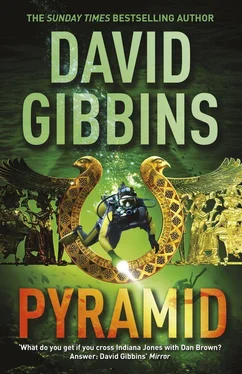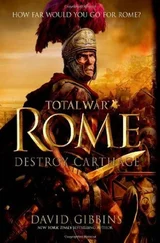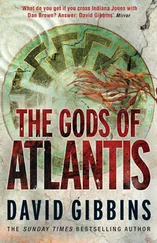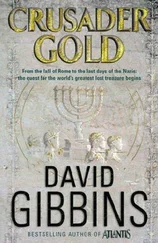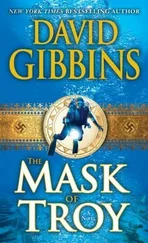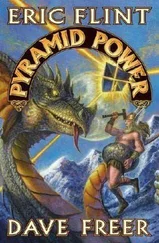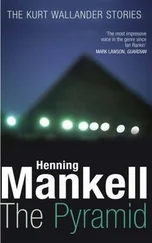“Huh? I thought the tomb was undisturbed.”
“It was. The empty sarcophagus means that Mehmet-Re died in action and his body was never recovered. The best his family could do was to go through the motions and hope that the gods would still accept him into the afterlife.”
“The action in the wall painting,” Costas said. “Could that be the actual battle?”
Hiebermeyer sat back, tapping a pencil on the table. “I’d assumed it was a generic scene. If a body wasn’t recovered, that usually meant a catastrophic defeat, one leaving few survivors or eyewitnesses.”
“Sounds like our chariot charge into the Red Sea.”
Hiebermeyer stopped tapping and stared at the screen. “It’s possible. We know that Mehmet-Re was a general and died in battle during Akhenaten’s reign. We don’t know of any other catastrophic defeat incurred by Akhenaten, certainly none in which such a high-ranking officer died. Assuming that Akhenaten was the pharaoh of the Old Testament story of Moses, that chariot charge would fit the bill.”
“And no surprise that there’s silence about it in the other sources,” Jack added.
Hiebermeyer nodded again. “You’re going to find evidence buried away like this only in tombs. You don’t celebrate a catastrophic defeat with inscriptions and relief carvings in the great temples, especially the apparent destruction of the most powerful chariot army in the world by a band of unarmed slaves. If you’re going to talk about it at all, it’s more likely you give a supernatural explanation. The desert was a feared place, and this wouldn’t have been the first time an Egyptian army had disappeared into the dust, never to be seen again. The Israelites might not be the only ones who invoked the powers of a deity in their explanation of what happened that day beside the Red Sea.”
“Is there anything else in the tomb that could pin it down?”
Hiebermeyer slumped forward. “I had only a matter of minutes in there before I had to call in the bulldozer to bury that part of the site. I had my camera with me and photographed everything I could see, and it’s just possible that something else will show up in the images of the walls — a hieroglyphic cartouche perhaps. The problem is that much of the wall was heavily mildewed and the painting was obscured. The other problem is that apart from Aysha, you two are the only people to know about the tomb, and I can’t risk giving the images to anyone else in my team to analyze in case word slips out. I might be able to snatch a few moments to glance at them myself over the next few days, but I can’t promise it. The priority for me now is getting back to finish off the parts of the necropolis that are still under excavation.”
“We hear you,” Jack said.
Another figure walked into the room, a short, compact woman also wearing dusty khaki, her dark hair tied back in a bun. She handed Costas a thick sandwich and offered another one to Jack, who shook his head. Jack knew from glancing at her that now was not the time for niceties, and she walked over and put a hand on Hiebermeyer’s shoulder, her expression serious. “I’ve seen the pictures you sent from the Red Sea, Jack. What else have you got?”
“I wanted you to see this, Aysha, because you were the one who came across that First World War diary entry that led us to the site, and it specifically mentioned what you’re about to see.” Jack put a memory stick into the computer and opened up the file containing the images that Costas had taken of him in the final moments of the dive. He found what he wanted, and clicked it open. Hiebermeyer stared at the screen, and then clapped his hands. “I knew it,” he cried. “I knew when I saw the sketch in that officer’s notebook that it was one of those.”
“You can identify that for certain?” Costas asked, his mouth full.
“It’s a khopesh sword,” Hiebermeyer exclaimed. “Look at that poster on my wall, from the Tutankhamun exhibition that travelled the world a few years ago. You can see one there, almost identical.”
“It’s not the most practical-looking weapon, is it?” Costas said, munching on his sandwich and peering at the poster. “I mean, from a military point of view. That sickle-shaped blade would have been difficult to balance and unwieldy in battle. It’s more like an executioner’s sword.”
Hiebermeyer nodded. “Howard Carter thought they were more suited to crushing rather than cutting, but with a razor-sharp edge and the weight of the blade it would have worked well for decapitation. They seem to be Asiatic in origin and arrive in Egypt about the beginning of the New Kingdom, about the same time as chariots, and disappear by the end of the Bronze Age. There’s no doubt that these were high-status weapons carried by officers, by army or divisional commanders. It shows that those charioteers were being led by their officers when they rode off that cliff into the sea, and the men were not being forced on some kind of suicide charge by officers who remained behind.”
“Can you date it more closely?” Jack asked.
Hiebermeyer rocked back on his chair, staring at the photograph. “The closest date we’ve got for one is the example from Tutankhamun’s tomb, about 1320 BC.”
“The son of Akhenaten and Nefertiti?” Costas said.
“Not all would agree, but I believe so,” Hiebermeyer said. “Whatever their true relationship, they were certainly only a generation apart.”
“Good enough for me,” Costas said. “And Akhenaten’s our man? I mean, are we sure he’s the pharaoh of the Old Testament, the one who chased the Israelites across the sea?”
Hiebermeyer looked at Jack, who nodded. “We’re not sure, but that’s the consensus.”
“Well, looking at those two photos, I’d say those two swords were cast in the same foundry.”
“You may well be right,” Hiebermeyer said. “But it’s not enough evidence to confirm the identification of the pharaoh at the time of the chariot disaster. Egyptologists are used to dealing with very precise data, and our theory won’t wash unless we can find archaeological evidence to pin this with absolute certainty to Akhenaten. Did you have time to look closely at the blade of that sword, Jack? Any indication of hieroglyphs?”
“Nothing that I could see.”
“Any other artifacts at the site? Any at all?”
Costas suddenly shot bolt upright. “Ah.” He turned to Jack, a guilty look on his face.
“I know that look,” Jack said, narrowing his eyes. “It means Costas has seen something archaeological but forgotten to tell me, usually because whatever technical thing he was doing at the time was more important. Am I right?”
Costas coughed, spilling crumbs down his shirt, and reached into his shorts pocket. “Well, not seen something, exactly. I found something. I’d clean forgotten about it until this moment. Had it in these shorts all the way from the dive boat.”
Jack stared at him. “You mean you went through security at the airport with some looted antiquity in your pocket, just when we were trying to remain incognito and avoid any confrontation with the Egyptian authorities?”
“Sorry, okay?” Costas took another bite from his sandwich. “Anyway, I’d also forgotten that my notebook had the full specs for the latest IMU deep-submergence Aquapod on it. That’s far worse. I must have had too much nitrogen still circulating in my head. Now it would have been a disaster if they’d found that.”
Hiebermeyer stared at him. “If you hadn’t been my son’s godfather…”
“And an all-round good guy,” Costas said, munching away and handing him the object he had fished out of his pocket. “You were going to say?”
“Mein Gott,” Hiebermeyer whispered, staring at the artifact in his hands, turning it over and letting Jack look. “It’s a fragment of gilding from a wooden panel that’s thick enough to be gold plate. It must be part of the openwork decoration on that chariot facing. Look at that poster again and you can see a shield decorated that way from the tomb of Tutankhamun that shows the pharaoh smiting a lion, and a small panel on the side containing his two first names.”
Читать дальше
